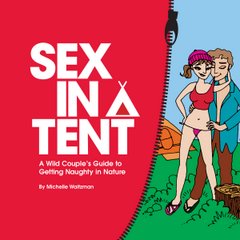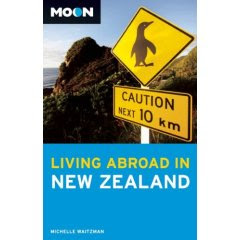
We now rejoin the Round-the-mountain track on day 4 - which also happened to be New Year's Eve.
This was the most varied terrain of all of the days we tramped, but some of that variety I could have done without!
It all started well with a morning walking mostly through beech forest with some boggy clearings. A lot of work has been put into laying down boardwalks over the boggiest areas to keep the track from eroding away completely. They also make it a lot easier to walk this part of the track, keeping us mainly out of the mud. Of course they leave gaps in the boardwalks in some areas, just so you don't end up looking too clean by the end of it!
By late morning we were coming up on Ohakune Mountain Road, which is the road leading up to the Turoa Ski Field. Unfortunately, the track makes a bit of a jump at this point. You have to walk three kilometres up the road to rejoin the track and continue around. And when I say up, I mean UP. It was an annoying slog in the midday sun, trudging along for an hour while cars zoomed by loaded up with mountain bikes and such.
We were actually offered a ride up the hill almost immediately by a passing car, but G decided that accepting the ride would be 'cheating'. As far as I'm aware, tramping is not a competitive sport, and therefore there is no such thing as 'cheating' unless you're trying to set a record of some kind. However, I discovered later that evening at the hut that pretty much all of the men felt the same way. If you don't walk the entire track (even if it's on a road) you can't legitimately say you've 'done' it. It must be a guy thing. As far as I'm concerned, my experience would have been just as legitimate without spending that hour walking up the road. But walk we did. And tiring it was. And speak like Yoda it made me.
The rest of the day's travel took us back onto rocky terrain. We dropped down into a valley, then up a ridge, and then - the Cascades. If it has a name, you know it's going to be memorable! The Cascades is a rockfall descent that starts out steep but reasonable, and ends with a challenging drop down the last area of smooth rock, next to a churning river. There were a couple of times where I had to find cracks wide enough to shove a foot in, and climb down facing into the rock. It's not my favourite thing to do. Gives me too many flashbacks of my "wilderness adventure" a few years ago in Utah and Arizona. To top it off, there are some streams to cross at the end of the descent, so I arrived at Mangaturuturu Hut with my boots full of water for the first time on this trip.
The hut is owned by the Wanganui Tramping Club and is the smallest on the track, sleeping just 10 people. So it's rather unfortunate that 18 people showed up that day! The problem is, it's within a couple hours' walk from two roads, so people can walk in one day and out the next. We managed to cram 13 people onto the bunks, one guy decided to sleep outside in a bivvy bag, and the rest found space on the floor. We counted down to the New Year at around 9pm, because nobody was prepared to hold out until midnight. Not with the sun coming up at 5:30am!
Day five was probably the most physically draining. It started off fine, with a swift river crossing just behind the hut and then a climb up to Lake Surprise. (I guess nobody expected to find a lake there?) After the lake is a long staircase up to the next ridge, which I quite frankly appreciated even though it's there to protect the delicate plant life.
The rest of the day was spent going up and down either rocky or muddy valleys. The mud was quite a pain, because it had made large troughs in a lot places that I had to lower myself into and haul myself out of. Somehow I managed to avoid slipping and falling on my bum in the mud, which was a small miracle. Many of the streams on the valley floors were small, but others were not possible for me to cross dry-footed. I got four or five foot soakings throughout the day, and my socks were beginning to rub uncomfortably against the tops of my toes.
I think it took us almost seven hours to reach Whakapapaiti Hut, by which time I was well and truly sick of the day's terrain. Luckily, the clouds that had threatened to rain on us all day never did, and the evening cleared up beautifully and made for much lounging on the deck outside the hut.
Our final day was a short one, down the valley and over a couple of ridges back to Whakapapa Village. After negotiating a bit of muddy track, we were faced with crossing the Whakapapaiti River. This was our biggest crossing yet, and we did it linked up. Unfortunately we didn't think it through too well, and G was in the downstream position. This wasn't too big a deal, but I ended up wet almost up to my hips thanks to the heavy flow of the river. There was a family of four close behind us, and I'm sure it was a challenge to get their little girl (around seven I think) across there.
Soon after that it started raining, and continued for the rest of our walk out - hence no photos of day six! It's a shame because I quite enjoyed the scenery that morning. We were back into the forest, and there were some great cabbage trees, and some lively rapids in river that didn't have to be crossed. On a nice day it would be a lovely walk.
We were back at the car by 11am, ready for a change of clothes and a non-dehydrated meal. All in all, the walk was a bit long and I felt like the bits of worthwhile scenery were a bit too few and far between. However, with so many roads leading to parts of the track, it's easy to do parts of this route without committing 5-6 days and carrying a heavily-laden pack.
 Anybody else remember the 20 Minute Workout? I actually used to DO the damn thing - not realising it was mainly used as a free alternative to 80s porn! If I had only known then what damage it was doing to my poor, adolescent knees...
Anybody else remember the 20 Minute Workout? I actually used to DO the damn thing - not realising it was mainly used as a free alternative to 80s porn! If I had only known then what damage it was doing to my poor, adolescent knees...








 Despite the wind, we managed to light our stove and make dinner in the shelter of a flax plant. If you're thinking of camping out there, bring lots of water with you. The only water source appears to be the trickle of a stream. Since we were car camping anyway, we just filled up some extra containers at home.
Despite the wind, we managed to light our stove and make dinner in the shelter of a flax plant. If you're thinking of camping out there, bring lots of water with you. The only water source appears to be the trickle of a stream. Since we were car camping anyway, we just filled up some extra containers at home. 







 Those same sunny skies were making us pretty hot and tired, so when we stopped for lunch G managed to rig up a bit of shade using a ground sheet and my hiking poles.
Those same sunny skies were making us pretty hot and tired, so when we stopped for lunch G managed to rig up a bit of shade using a ground sheet and my hiking poles.
 The second day of the walk led us past a clear spring called Ohinepango Springs. From there the landscape became more barren and we began to understand that we were tramping through a desert.
The second day of the walk led us past a clear spring called Ohinepango Springs. From there the landscape became more barren and we began to understand that we were tramping through a desert.  Walking on rock, ash and sand was a bit hard on the feet, compared with the previous day's tussocks. At one point we had to cross through a valley where there have been several "lahar" (muddy volcanic floodwater) flows. These occur when the water from the crater lake near the summit hits a tipping point and overflows. The dramatic scenery these events have left behind is quite striking, but since there are warnings not to stop while crossing through I wasn't able to take any pictures.
Walking on rock, ash and sand was a bit hard on the feet, compared with the previous day's tussocks. At one point we had to cross through a valley where there have been several "lahar" (muddy volcanic floodwater) flows. These occur when the water from the crater lake near the summit hits a tipping point and overflows. The dramatic scenery these events have left behind is quite striking, but since there are warnings not to stop while crossing through I wasn't able to take any pictures.







